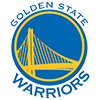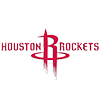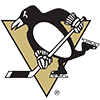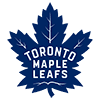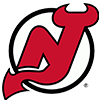Injuries are an inherent problem for fantasy baseball owners that can ultimately and unpredictably alter your path to a championship. Each positional player faces a grueling 162-game season in which they often must brave the hot summer weather in consecutive days with little time to rest and recuperate. Modern-day pitchers may be better protected in the past but still are susceptible to a multitude of ailments associated with the physical requirements needed to pitch every fifth day.
The 2010 season kept Major League medical staffs particularly busy as numerous marquee players missed time with a variety of ailments. Only two players, Seattle's Ichiro Suzuki and LA's Matt Kemp participated in each of their team's 162 games and only ten others played at least 160. In fact half of the top 30 positional players in RotoWire's preseason player ranking last season missed at least 20 games while nine of the players missed 40 or more games. Elite pitchers weren't immune from the injury bug either as five of the top 30 starters spent time on the disabled list and that doesn't include Adam Wainwright, Josh Johnson, or Johan Santana who were all shut down prematurely. However the offseason has allowed a majority of these players to regroup, rehabilitate, and hopefully return to action as well as to the top of your draft board.
Starting Pitchers
An injury to an elite pitcher can be a devastating blow to fantasy owners. Typically injuries to pitchers mean a lengthy trip to the
Injuries are an inherent problem for fantasy baseball owners that can ultimately and unpredictably alter your path to a championship. Each positional player faces a grueling 162-game season in which they often must brave the hot summer weather in consecutive days with little time to rest and recuperate. Modern-day pitchers may be better protected in the past but still are susceptible to a multitude of ailments associated with the physical requirements needed to pitch every fifth day.
The 2010 season kept Major League medical staffs particularly busy as numerous marquee players missed time with a variety of ailments. Only two players, Seattle's Ichiro Suzuki and LA's Matt Kemp participated in each of their team's 162 games and only ten others played at least 160. In fact half of the top 30 positional players in RotoWire's preseason player ranking last season missed at least 20 games while nine of the players missed 40 or more games. Elite pitchers weren't immune from the injury bug either as five of the top 30 starters spent time on the disabled list and that doesn't include Adam Wainwright, Josh Johnson, or Johan Santana who were all shut down prematurely. However the offseason has allowed a majority of these players to regroup, rehabilitate, and hopefully return to action as well as to the top of your draft board.
Starting Pitchers
An injury to an elite pitcher can be a devastating blow to fantasy owners. Typically injuries to pitchers mean a lengthy trip to the disabled list or, even worse, a trip to the operating room. Modern-day pitchers are better protected as teams closely monitor pitch counts and employ well-groomed pitching coaches with an eye for catching faulty mechanics. However a variety of forces act on the shoulder and elbow during the act of pitching and even the most well-protected athlete can still suffer an injury.
Rookie Stephen Strasburg erupted on to the scene last year with a blazing fastball and an overwhelming breaking ball. He fanned 14 players in his big league debut and went on to strike out 32 batters in his first three starts. The Nationals were extremely cautious with the young pitcher, placing a pitch limit on the phenom and closely monitoring his workload. They placed him on the disabled list when he experienced some shoulder stiffness and allowed him extra days of rest. However delivering a 100 mph pushes the boundaries of the ligaments in both the elbow and shoulder and Strasburg's rookie season ended prematurely after he suffered a torn ulnar collateral ligament (UCL) in his throwing elbow. Doctors examining Strasburg's elbow said the torn ligament did not show any signs of previous deterioration and that the ligament likely tore on one particular pitch.
The UCL serves as an attachment between the humerus (the upper arm bone) and the ulna (one of two bones in the forearm) and provides stability to the elbow joint. However during various points in pitching, more than two times the amount of force the ligament can withstand is placed through the elbow. Dynamic stabilization by other muscles in the elbow insures the ligament does not fail with every pitch but it does become apparent why pitchers are constantly suffering UCL tears. The UCL is repaired using a tendon graft, often taken from the opposite forearm, in a procedure commonly known as Tommy John surgery.
The recovery window for Tommy John surgery is generally 12-to-14 months and it is unlikely Strasburg will pitch in the upcoming season. However elbow rehabilitation is better understood and several marquee names have had successful careers following Tommy John including Josh Johnson, Chris Carpenter, and C.J. Wilson. Strasburg should be back in action in 2012, something those in keeper leagues should take into consideration.
The Mets' Johan Santana also faces a long rehab as he recovers from surgery to repair a torn anterior capsule in his left shoulder. The anterior capsule is a structure made up of connective tissue, ligaments, and tendons that surround the shoulder joint. It originates from the cartilage disc known as the glenoid labrum and attachment points on the shaft of the humerus. The capsule secures the glenohumeral joint of the shoulder, and like the UCL in the elbow, helps diffuse the stresses of throwing particularly stress placed on the rotator cuff muscles.
The Mets team doctor repaired the tear arthroscopically and utilized a procedure known as capsulorrhaphy. In the operation stability was regained by the insertion of a surgical anchor that forces the to joint capsule become tighter and more stable. The Mets are hoping Santana will be ready by June, but that outlook seems optimistic. While position players like Carlos Gullien and Jorge Posada have missed minimal time after similar procedures, pitchers have not had as much success.
Washington pitcher Chien Ming-Wang had surgery to repair a torn anterior capsule in June of 2009 and has yet to throw a pitch for the Nationals. A torn anterior capsule was also the injury that derailed the promising career of Mark Prior. Fantasy owners may be able to draft Santana on the cheap but understand he comes with a giant question mark.
Jake Peavy is hoping to bounce back in 2010 after undergoing surgery five months ago to repair a detached latissimus dorsi muscle. The lat runs along the thoracic region of the spine before inserting into a small groove in the humerus. It is utilized in multiple shoulder movements including extension, internal rotation, and horizontal abduction while serving as both an accelerator and a decelerator. Peavy's injury occurred when a tiny piece of the humerus avulsed away and had to be reattached. The White Sox are expecting him back in action for spring training but have hinted he could start the season on the disabled list.
Another former Cy Young-winner hoping to reestablish himself is Texas' Brandon Webb. The former Diamondback underwent a rotator cuff debridement procedure in August of 2009 to remove inflamed tissue from his throwing shoulder. The surgery was a success and did not reveal damage to the labrum. Rangers executives may have had a slight advantage in evaluating the risk of signing Webb since team physician Dr. Keith Meister performed the 2009 procedure. Knowing that, Webb could be a steal for opportunistic fantasy owners if he can recapture the magic that propelled him to the 2006 Cy Young.
St. Louis Cardinals ace Adam Wainwright should be drafted with confidence despite missing his final start of 2010 with a forearm strain and inflamed nerve. A MRI revealed no structural damage, and Wainwright was able to condition accordingly throughout the offseason once the inflammation had subsided and the muscle healed. Wainwright, a 20-game winner last season, remains an elite fantasy option.
Marlins pitcher Josh Johnson also benefited from a quiet offseason. Johnson strained a back muscle that began affecting his pitching mechanics and eventually resulted in shoulder inflammation. The Marlins elected to play it safe with their ace and ended his season after one September start. Johnson had a spectacular first half in 2010 before sputtering in his final 10 starts, collecting just two wins to three losses. The muscle strain was likely the culprit behind his poor performance. Fortunately, the muscle has completely healed once again making Johnson a top-pitching target.
Another key component of Florida's pitching rotation will be ready for spring training as Ricky Nolasco is expected to be fully recovered from knee surgery. Nolasco underwent an arthroscopic procedure to repair a torn medial meniscus in his right knee. The menisci are fibrocartilage disks that sit within the joint capsule of the knee. They serve as a shock absorber for the knee and aid in stabilization. However, because of their location they are prone to being torn when the knee is twisted. Significant tears, like the one sustained by Nolasco, will often act like a doorjamb in the knee and limit the joint's range of motion.
Once torn, meniscus injuries are surgically fixed. A repair is generally performed when the injury occurs to the outer portion of the disk. However, more often than not a tear it is not repaired but instead removed or "cleaned up." A partial menisectomy allows for a quicker recovery but can occasionally be problematic down the road. Florida does not appear threatened by the injury, signing Nolasco to a new three-year contract worth $26.5 million. He should be ready for Opening Day.
Atlanta's Jair Jurrjens underwent a similar procedure in October to repair a small horizontal tear in his lateral meniscus. He is fully expected to be ready for the start of spring training.
Relievers
2010 was a lost season for Minnesota closer Joe Nathan. Like Strasburg, Nathan tore the UCL in his right elbow prior to the start of the season and underwent Tommy John surgery in March of 2010. With injuries, timing is everything and because the injury occurred so early, the likelihood of Nathan pitching in 2011 remains high. Matt Capps will remain the closer initially, but should Nathan return to his previous form, expect him to battle for closing duties by mid-summer.
Andrew Bailey showed his rookie season was no fluke in 2010 and would have likely surpassed his 26 saves from that season if an elbow issue had not forced shut him down. Several bone chips and scar tissue, probably from a Tommy John surgery performed while in college, were removed from the elbow in a process known as a debridement. In the procedure, calcium deposits, damaged cartilage, or inflamed tissue is excised, decreasing the discomfort felt by the athlete while creating an environment better suited for healing. Bailey will be close to 100 percent entering the spring and should resume the closer role.
Rockies closer Huston Street was beat up all of last season, missing time with a variety of injuries including an inflamed shoulder, a groin strain, an abdominal contusion, and a rib injury. Street feels the injuries were a result of bad luck more than anything and is poised to rebound in 2010 after altering his conditioning program and adopting a more mature attitude. His new plan includes gradually building up his workload and provides more rest between workouts. However, until he proves he can stay on the mound and out of the athletic training room, do not invest too heavily in Street.
While pitchers are more prone to chronic and overuse injuries, position players often miss time due to traumatic injuries that result from style of play and the physical demands baseball takes on the body while fielding, batting, and rounding the bases.
Catchers
Manning the backstop is a dangerous job. Not only are you repeatedly throwing the ball and constantly subjecting your knees to wear and tear but you occasionally get bowled over by an overaggressive baserunner. Just ask Cleveland's Carlos Santana.
The rookie catcher suffered a lateral collateral ligament (LCL) sprain after he violently hyperextended his knee during a collision at the plate with Boston's Ryan Kalish. The LCL, which runs on the outer aspect of the knee joint between the femur and the fibula, was surgically repaired in August. The recovery window for Santana's LCL surgery is much smaller than the better-known anterior cruciate ligament (ACL) because his procedure did not require reconstruction. Instead the LCL was reattached, and Santana is expected to resume baseball activity in the early parts of 2011. Given the scarcity of quality catching and his preinjury numbers, Santana should be one of the first catchers selected in all formats. As an added bonus, the Indians plan on using Santana at first base to protect the knee and he could have added value with multiple position eligibility.
Former AL MVP Joe Mauer plans to be behind the plate on Opening Day after undergoing minor knee surgery to remove a plica band in his inflamed left knee. Plica are remnants of a synovial membrane present in the fetal development of the knee. Generally they reduce in size while still in the womb but occasionally the plica fail to shrink resulting in protruding plica folds. These individuals are prone to knee inflammation and often complain of a catching sensation that can gradually be worked through. Mauer's surgery was considered a success and should not be an issue in 2011.
First Base
Angels first basemen Kendry Morales suffered one of the more bizarre injures last season when he fractured the lower portion of his fibula and tibia while celebrating a walk-off grand slam with his teammates. Morales' fractured ankle required surgery that likely included a fixation using surgical screws and/or metal plates to stabilize the joint. Morales has already resumed running and hitting off a tee and should be ready for action by the beginning of spring training. Morales' return should ignite a stagnant Los Angeles offense.
After a fractured vertebrae ended his season in 2009, Justin Morneau's injury woes carried over into 2010. The former MVP suffered a concussion on July 7 and did not return for the second half of the season. More notable in the NFL, concussions occur when trauma to the head results in an interruption of normal brain function. Physical and cognitive functions such as memory, balance, vision, and hearing can be temporarily disrupted. The length of the symptoms often varies with the severity of the concussion and the individual. Symptoms may clear after a day or two while others will linger for an extended period of time. Often symptoms will disappear in daily activity but will return with exercise and exertional activity, as was the case with Morneau. His symptoms would subside but whenever he attempted to take batting practice or perform cardio exercise, Morneau would experience fogginess and headaches. Fortunately the exertional symptoms have subsided and Morneau has been able to resume running and other cardio exercises. He was an MVP candidate before the injury and would be a solid addition to any fantasy team. However, keep in mind once a player has sustained one concussion he becomes more susceptible to suffering a subsequent one.
Already on the ropes, the Yankees postseason hopes took a devastating blow when Mark Teixeira was removed from the ALCS lineup with a Grade 2 hamstring strain. Teixeira never returned, and the Yanks were eliminated three games later. The hamstring is a muscle group located on the posterior aspect of the thigh and is primarily responsible for bending the knee. It is utilized in running, specifically accelerating, and when strained can become very painful and limiting. A Grade 2 strain means the muscle sustained a partial tear. Hamstring injuries are common in baseball as players explode down the first baseline after collecting a hit. The general timeline of recovery for a Grade 2 strain is six to eight weeks, which would allow Tex to be completely healthy by the spring.
Second Base
Dustin Pedroia was one of several Boston players to be sidelined by significant injuries. Pedroia suffered a fracture in the navicular bone of his left foot in late June and appeared in just two games the remainder of the season. The navicular sits on the inside or medial aspect of the foot and helps stabilize the foot while also serving as an insertion site for muscles. The fracture was not displaced but surgery was carried out in September to insure the bone healed properly. The surgical screw apparently did the trick and Pedroia will return in 2010, the centerpiece of a potent Boston lineup.
Martin Prado had his breakout year stalled by a broken pinkie and ultimately ended by a hip pointer and torn oblique muscle in his left hip. A hip pointer is a contusion to the crest of the pelvic bone known as the ilium. Regularly a tear of the external oblique muscle accompanies a significant hip pointer when the muscle is torn away from the iliac crest. The injury is extremely painful and causes pain with trunk rotation and simple activities like breathing, laughing and coughing. It appears the Braves feel confident that the injury is no longer an issue as they plan on shifting Prado from second base to left field. Newly acquired Dan Uggla will start at second base.
Shortstop
Jimmy Rollins appeared in a career-low 88 games last season as an assortment of injuries nagged him throughout the year. Calf and hamstrings strains were the culprit, and the Philly shortstop has adopted a unique offseason program to better prepare himself for 2011: yoga. Yoga is a form of active stretching that can improve an individual's flexibility, balance and strength. A reduction in tension and tightness would help decrease the threat of hamstring and calf strains and could propel Rollins back to elite status. However, his batting average has dipped in four consecutive seasons and he could be showing signs of slowing down. He is still a top-10 talent in a limited position but must avoid the DL to truly be effective, something he has been unable to do in recent memory.
Jose Reyes has given fantasy owners just as many headaches as Rollins with his inability to remain healthy. Reyes was slowed with a calf strain and a torn hamstring of his own for most of 2009 and missed time in 2010 with a strained oblique and hyperactive thyroid. Neither ailment remains an issue but understand by drafting the Mets shortstop you should also target a suitable backup for Reyes' inevitable trip to the DL.
Third Base
Corner infielder Kevin Youkilis missed the last 53 games of Boston's season after tearing and rupturing a thumb muscle known as the adductor pollicus. The adductor pollicus is a two-headed muscle responsible for moving the thumb toward the palm and is essential in a power grip. Surgery and extensive physical therapy appear to have done the trick, and Youk will man the hot corner come Opening Day.
Many people expected Chipper Jones to call it career after he suffered a torn ACL for the second time in his career. However, the veteran had the ligament surgically repaired and is hoping to be available early in what would be his 17th season. Jones will be just eight months removed from surgery on Opening Day and is a likely candidate to start the season on the DL. Obviously age and injuries have diminished Jones' value but he could serve as a suitable insurance option should he return to full health.
Washington third basemen Ryan Zimmerman missed time with a strain to the muscles located in-between his ribs. The muscles, called the intercostals, lie between the ribs and elevate or depress the rib cage during breathing. A strain to this area often limits trunk rotation making swinging a bat and throwing painful. Zimmerman had the entire offseason to heal and could be poised for another big year especially with Jayson Werth joining the Nationals lineup.
Outfield
Jacoby Ellsbury was at the heart of Boston's injury problems last season, playing just 18 games with multiple rib injuries. 2009's stolen base leader suffered rib fractures at various points throughout the season before the team finally elected to completely shutdown the speedster. The move likely frustrated fantasy owners last season but should pay off in 2011, as Ellsbury will be healthy and able to battle Carl Crawford for the leadoff spot in the Red Sox lineup. Take a slight risk on Ellsbury and pounce if teams in your draft pass on him in early rounds based on last season.
Josh Hamilton snagged AL MVP honors despite missing time with a rib injury of his own. The Rangers outfielder bruised his ribs when he collided with the outfield wall and the collision forced his left arm into the left side of his rib cage. Hamilton returned from the injury and led Texas to an American League pennant and should be a top round target for both average and power.
While Jose Bautista was a surprise home run champion, his 54 home runs are even more impressive considering he played a majority of the season with a sports hernia. A sports hernia develops when an extension of the abdominal viscera protrudes out of a weaker portion in the lower portion of the abdominal wall. The hernia forms in this thin and weak region, resulting in pain that increases when running and cutting. Bautista underwent surgery to repair the area and restore the protrusion. To prevent re-occurrence, the weak area was likely reinforced with a surgical mesh or glue. Several players including Josh Hamilton have undergone the procedure and Bautista should be set to defend his home run title when Toronto opens at home against the Twins.
Detroit's willingness to extend Magglio Ordonez a one-year $10 million deal is a good indicator that his fractured right ankle will not be an issue in 2011. Ordonez fractured the ankle in late July while sliding into home and would not return for the remainder of the season. The Tigers medical staff hoped Ordonez could avoid going under the knife, but the bone was slow to heal and the veteran eventually required surgery to stabilize the fracture. Ordonez has completed his rehabilitation and the Tigers will likely lighten his load by delegating him to designated hitter duties on occasion. While no longer an elite fantasy weapon, the addition of Victor Martinez and the presence of Miguel Cabrera could propel Ordonez to respectable numbers in 2011.
Justin Upton failed to build on a remarkable 2009 largely in part to a recurrent shoulder problem. Upton suffered a tiny tear in the labrum of his shoulder and was in and out of the lineup. The shoulder's primary articulation is the glenohumeral joint, a ball-and-socket joint. The head of the humerus acts as the ball and rests in the glenoid fossa of the scapula, which serves as the socket. The humerus freely spins on the glenoid fossa allowing for a large degree of motion. The body is equipped with the fibrocartilaginous labrum that deepens the fossa, and along with a multitude of ligaments and musculature, helps stabilize the shoulder. A torn labrum is painful and can develop into a chronic instability in the shoulder. Upton spent the offseason strengthening the surrounding muscles to better stabilize the shoulder and reported no issues during a stint in the instructional league. A dip in power wouldn't be surprising but Upton still has a ton of potential and shouldn't slip too far in all drafts.
Oakland veteran Coco Crisp bookended his 2010 season with a pair of pinkie fractures. He missed eight weeks of action to start the season after breaking the distal phalange on his fifth finger. Then a second fracture in the same phalange but closer to the fingertip ended his second half surge. Both breaks occurred as Crisp slid into a base but neither required surgery. Oakland showed a penchant for aggressive baserunning and often gave Crisp the green light to run. However Crisp has be unable to stay healthy in consecutive seasons, playing in just 124 games. Keep an eye on Crisp but know drafting him comes with a fundamental risk.
Another talented outfielder with a propensity for the disabled list is Cleveland's Grady Sizemore. Elbow surgery and abdominal surgery to fix a sports hernia limited him to 106 games in 2009 and a significant knee injury proved more problematic, ending his 2010 season after just 33 games. Sizemore underwent microfracture surgery in June, a procedure that gained notoriety first in the NBA.
The surgery is an arthroscopic knee procedure usually carried out to repair damaged cartilage. Smooth cartilage known as hyaline cartilage covers the weight bearing aspect of the femur, tibia and fibula in the knee allowing the joint to move smoothly and withstand large amounts of force. However a defect can develop in the cartilage causing pain, swelling, and a catching sensation within the joint.
In microfracture surgery the affected cartilage is cleaned away before tiny fractures are made in the bone. The body's natural defense system responds to the breaks and begins creating marrow-filled clots to repair the damaged cartilage. With time the microfractures are replaced with new cartilage that will allow the athlete to return to activity.
Sizemore is targeting an Opening Day return and hopes to silence critics, but he has a lot to prove to garner the trust of fantasy owners. He will be a high-risk, high-reward player on draft day.
Marlin outfielder Chris Coghlan joined Kendry Morales on the list of players injured during a post-game celebration. Coghlan suffered a torn meniscus in his left knee while delivering a shaving cream pie to the face of a teammate. Coghaln required a partial menisectomy and should be ready to play by spring training. It seems like this injury is an isolated but unusual incident, and the Florida outfielder could serve as a reasonable third outfielder or utility player.










